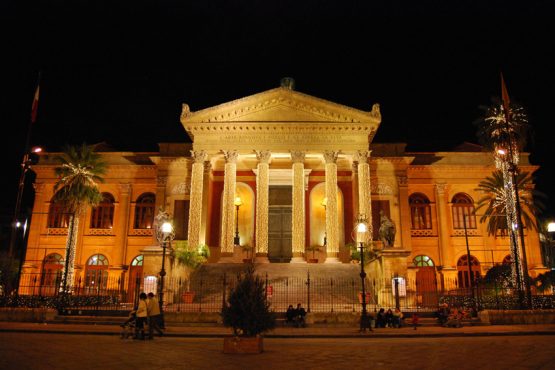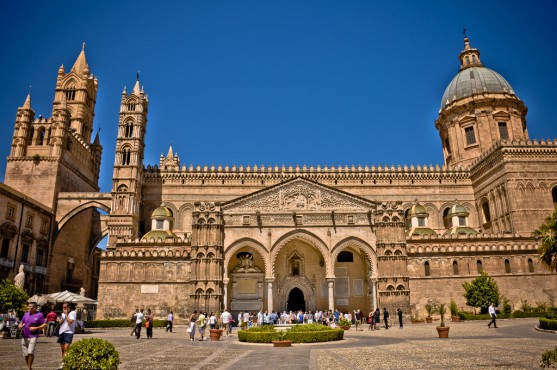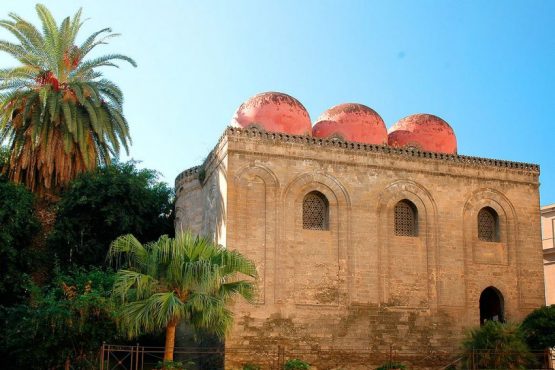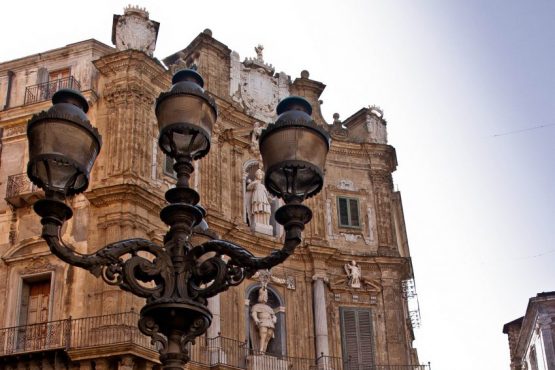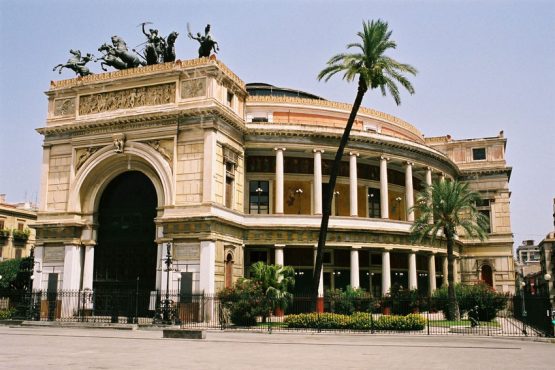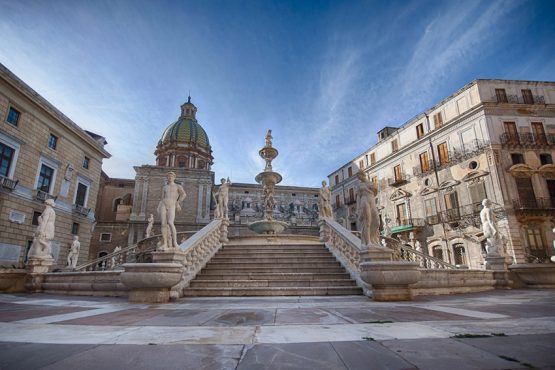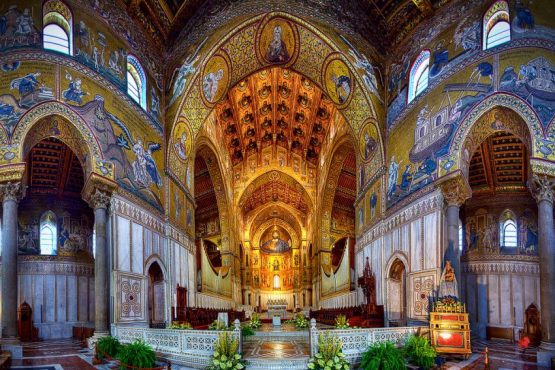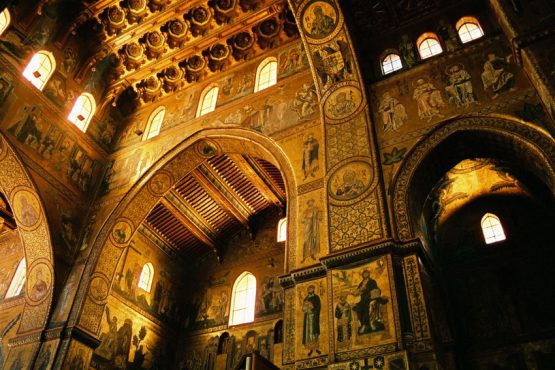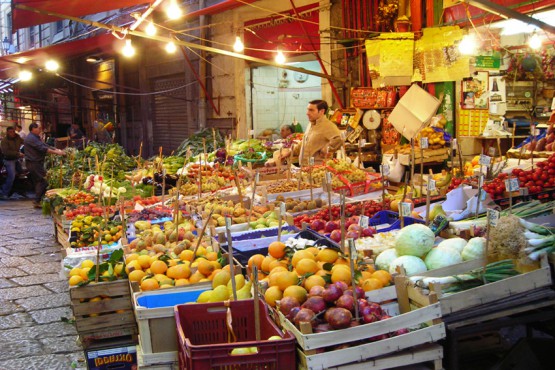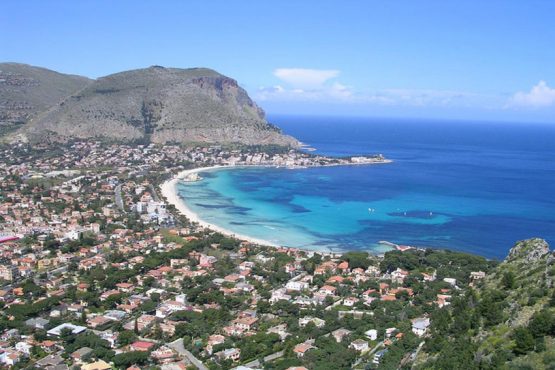Palermo is concentrated in a historic area called “Four Corners” (also known as the Theatre of the sun, since always exposed to the sun), a square shaped roughly octagonal includes four districts: Albergheria , Capo (the Chief), Cala and Kalsa. Here are all the ancient monuments and medieval beauty. Here you will find a mix of both medievel and African streets and squares typical of Sicily.
Of particular interest is the Arab-Norman Palatine Chapel that dates back to 1130-40, located in the sumptuous Norman Palace, that is now housing the Sicilian parliament, and at point the royal chapel of the Norman King of Sicily. The Palatine Chapel remains an important and beautiful example of Byzantine architecture and Saracen. The elegant mosaic present within it draws defined as one of the most beautiful and best preserved of all the Italian territory.
Palermo Cathedral
The Cathedral, founded in the late twelfth century, is another monument of great historical importance. It contains the tomb of Frederick II and other rulers and is characterized by the presence of different styles due to a long series of restorations. Built in 1170 by Archbishop Gualtiero Offamilio it is located in a place where an ancient basilica was founded by St. Gregory and became a mosque during Saracen domination.
The Cathedral is richly decorated with frescoes and mosaics of the twelfth and thirteenth centuries, offering a variety of sculptures and Gagini Villareale, it also contains the famous “Assumption” of Velasquez accompanying other paintings by unknown authors. Its crypt contains the tombs, exactly 21 of the Archbishops of Palermo and the famous “Tabularium” was also found, an important historical documents in Latin, Greek, and Arabic. Of great value are also the ecclesiastical clothes and some tools Catholic rite, and the famous crown of Constance of Sicily kept since 1491.
The Church of St. John of the Hermits of 1132, located near the Royal Palace, is another example of Arab-Norman architecture of the city of Palermo. Built on top of a mosque has a tower with Norman origins accompanied with Gothic characteristics. Overall, the church is undoubtedly one of the most striking monuments of the city because of its Arabic-style decor, gardens with majestic trees and elegant small convents.
Martorana Church
Another interesting monument is the Martorana Church, built by George of Antioch who was admiral of King Roger (twelfth century). It was a Greek-Orthodox Church during the Norman period then it was converted into a Catholic church and later became part of the Byzantine Catholic Diocese of Piana degli Albanesi in 1935. Its original construction type Arabic-Norman was altered in the seventeenth century when the central part of the nave and part of the mosaic were substituted by frescoes and Baroque-style decor.
However, the original features of the elegant Arabic-Norman architecture still exist, particularly in one of the most famous mosaics of the Martorana, one in which is represented the coronation of Roger II by Christ, and at the top of the walls and dome, with the representation of Christ Pantocrator, where the mosaics are entirely covered with mosaics of the Byzantine period, the oldest of all Sicily, and of great importance, for their connection with those on Daphne, Attica.
Palermo Monreale Excursions.






